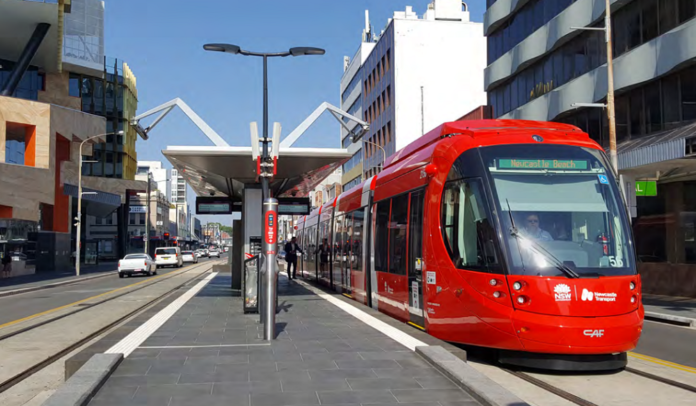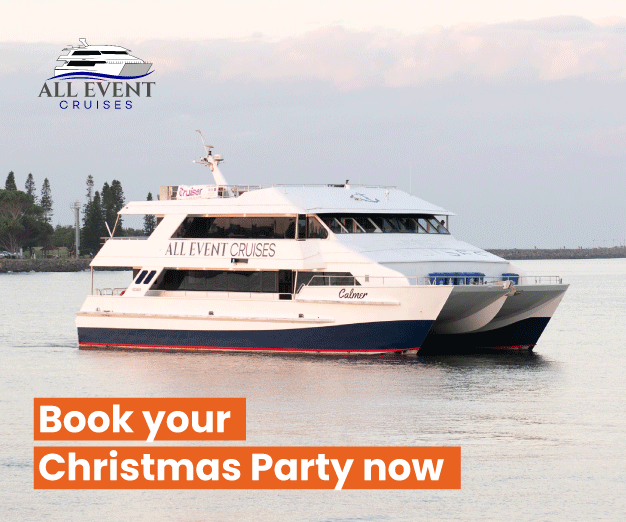With the Hunter region predicted to grow by 100,000 people over the next two decades, it’s time to look at managing the transport network differently.
And, the scenario could include an electric conveyance to Maitland or a rail link to Cessnock via Kurri Kurri, among other initiatives.
That’s according to the state body, which is asking residents to have their say on the draft Hunter Regional Transport Plan (HRTP).
The community’s invited to comment on the proposal until Friday 11 November.

The HRTP applies to the region, which consists of 10 LGAs, including Cessnock, Dungog, Lake Macquarie, Maitland, Mid-Coast, Muswellbrook, Newcastle, Port Stephens, Singleton and Upper Hunter Shire.
It will provide a vision for how the Hunter’s transport network, infrastructure and services will be managed and developed over time to realise community aspirations.
“In 2018, the NSW Government released NSW Future Transport 2056: a long-term plan for transport in the state,” a Transport for NSW spokesperson said.
“This [current] draft outlines what this means for the Hunter over the next 20 years.
“Its development has been guided by formal engagement and workshops with key state and local government stakeholders from all 10 councils, relevant state agencies and the Hunter Joint Organisation of Councils.
“So, the feedback from residents will also help us understand what is important to customers and the community.
“Today, the majority of the Hunter population choose to use private vehicles to travel.
“However, changing community needs and attitudes will see alternative options become increasingly important.
“The Hunter is the largest regional economy in Australia, contributing more than $34 billion to the NSW coffers and boasts the largest freight volumes in NSW.
“The expanding knowledge economy, diversification of Newcastle Port activities and creation of the Williamtown Special Activation Precinct will boost the growing economy, too.
“Investments to major freight routes including the M1 Pacific Motorway and the protection of the Lower Hunter Freight Corridor will support the increasing freight task in the region.
“So, strategically improving connectivity within and beyond the region is critical to facilitating the economic growth and diversification of the Hunter.”
Key goals of the vision include:
- A connected region – increased population within a 30-minute public transport trip of jobs, education and services from Greater Newcastle or your nearest strategic centre (Taree, Foster-Tuncurry, Morisset, Maitland, Kurri Kurri, Cessnock, Singleton, Muswellbrook, Nelson Bay, Dungog, Scone and Raymond Terrace)
- An integrated network – that embraces the 15-minute neighbourhood planning principle where people regularly choose to walk, cycle or take public transport to shops, services, schools or work
- Inter-regional connection – that builds on the Regional Rail Fleet and road upgrades as well as a potential future Fast Rail connection to improve multi-modal connectivity between the Hunter, Central Coast and Greater Sydney for passengers and freight
- Integrated transport, land use and infrastructure – that reflects balanced movement and place outcomes, contributing to better places and improving public transport attractiveness
- Supporting economic development – through improved road and rail networks that support Newcastle Port and Williamtown Special Activation Precinct, accommodate more efficient vehicle combinations, embrace technology-driven solutions, and address first mile/last mile freight
- Supporting tourism – through an upgraded Newcastle Airport, improved road networks and public transport services as well as integrated walking and cycling connections allowing visitors to easily explore the region
- Greater productivity – integrated transport infrastructure and services that connect residents with jobs, education, leisure and health ensuring the continued growth and diversification of sectors across the region, with first and last mile solutions tailored to support successful places
- Improved customer experience – by exploiting innovation and advances in technology to enable new and more personalised mobility solutions, inform customer decision-making with more ‘real-time’ information, improve safety, network resilience and freight efficiencies
- A more sustainable region – through uptake of electric vehicles in the transport fleet, an improved EV fast charging network and supporting the proposed Hunter-Central Coast Renewable Energy Zone (REZ)
- A more resilient region – that builds climate and hazard resilience into the network’s infrastructure supported by adaptive management strategies that maintain emergency access along key routes and bring the network back on-line quickly following planned and unplanned disruption
Feedback on the draft plan can be provided by:
- Visiting: yoursay.transport.nsw.gov.au/hunter-regional-transport-plan
- Emailing: [email protected]
- Writing to: Hunter Regional Transport Plan, Transport for NSW, Locked Bag 2300, Newcastle







